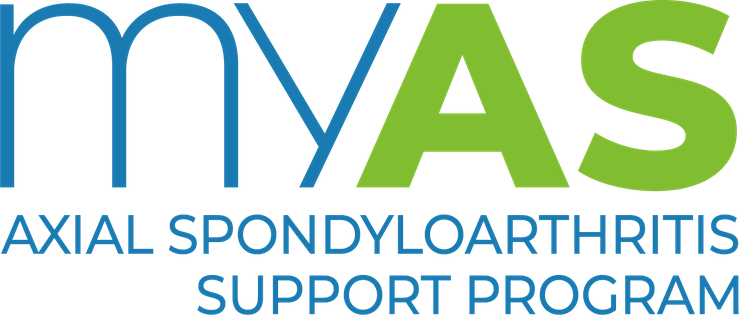
Most people with axial spondyloarthritis (axSpA) do not need to have surgery. However, surgery may be an option for people have severe spinal or joint problems. This is an introduction to the types of surgery for axSpA including tips on when to talk to your doctor about surgery and how to get prepared.
Why do people with axial spondyloarthritis have joint surgery?
A person with axSpA may benefit from surgery if they:
- have not responded to non-surgical treatment
- have severe spinal or joint damage that causes intense pain or restricts mobility and are unable to perform daily tasks
- have or at risk of nerve damage which can cause severe pain, numbness, or weakness.
Surgery can help to:
- relieve pressure and ease pain
- realign and stabilise the spine
- Improve movement
All surgery has risks. Make sure you understand the possible risks, their likelihood and their consequences before you decide to have surgery.
When should I talk to my doctor about joint surgery?
Surgery might be appropriate for problems that medicines and other treatments cannot fix. Some scenarios where surgery might help include:
- You have severe pain that stops you sleeping at night.
- Your pain does not improve with rest, medicines, exercise or other treatments.
- Your arthritis is making it hard for you to look after yourself (such as showering, getting dressed, preparing meals, getting out of a chair) and you need help from others for everyday tasks
- Your ability to work is reduced.
- Your pain stops you from doing things you enjoy, such as exercise or hobbies.
Who decides if I need surgery?
If you and your doctor think you may need surgery, your doctor will refer you to an orthopaedic surgeon. The surgeon will assess whether or not you may benefit from surgery. In some cases, surgery may not be recommended. If surgery is recommended it is still your decision whether to have it or not.
Before you decide, make sure you understand:
- what are the possible benefits?
- what are the specific risks with this type of surgery?
- whether there are any other options?
- what will happen if you don’t have this surgery?
- the likely cost and whether this will be covered by your health insurance.
Remember not having surgery is always one of your options. Your doctor or surgeon should be happy to arrange a second opinion if you want one.
What are the common types of surgery for axial spondyloarthritis?
- Osteotomy of the spine is an operation to cut and realign bone. This type of operation can help improve posture. but it does not completely restore mobility or flexibility.
- Spinal fusion instrumentation is when two or more bones are fused together. This is performed when significant damage has been done to the bones or too much bone has been removed during a osteotomy. The fused joints will stabilise the spine, but will reduce flexibility.
- Laminectomy is a type of spinal decompression surgery. It relieves pressure on the spinal cord and nerves.
- Joint replacement involves replacing a damaged joint with an artificial joint. The entire joint can be replaced (total arthroplasty) or just one part of the joint (hemiarthroplasty). Joint replacements can be done on knees, hips, shoulders, elbows, fingers, ankles, toes and the spine.
Getting ready for surgery
Here are some tips to help you prepare for surgery:
You may need to attend a pre-admission clinic at the hospital before your surgery. This is a good chance for you to ask questions about your surgery and recovery. Also, you may be able to talk to a physiotherapist or occupational therapist about the exercises you need to do after the operation. They can also advise you about any equipment you may need, such as crutches and handrails in the shower. It might also be helpful to find a support person, like a friend, family member or carer who can take you to and from surgery and help you attend rehab.
Your doctor may suggest you lose weight if you are overweight or stop smoking before the surgery, as these may increase your risk of complications. Smoking reduces circulation, which can complicate the healing process. Speak to your doctor or call the Quitline on 13 7848 for free information and support to help you quit.
Staying active before your operation can help you to recover more quickly after surgery. If you have severe pain, you may find water exercise more comfortable. See a physiotherapist for hydrotherapy or contact your local Arthritis Office for details of warm water exercise classes.
Tell your doctor about all the medicines you are currently taking, or have taken recently, including ‘natural’ and over-the-counter medicines. Some medicines, including those commonly used for joint pain and inflammation, can cause bleeding during and after surgery. Your surgeon may recommend you stop taking some medicines before your operation.
Life after surgery
Plan for recovery and returning home. Your healthcare team will advise you on the best way to recover and will develop a discharge plan for when you leave hospital. Your discharge plan will include advice on any restrictions on activities, such as driving, and any aids or equipment to help you around the house while you recover.
During your recovery, which may take days, weeks or even months. You may need help with daily tasks such as cooking and showering. Make sure you have family and/or friends available to help you during this time. If you do not have help available, talk to your doctor about local support services or staying at a rehabilitation centre after surgery.
You may also be prescribed medication, and it is important to understand what medication you need to take, how you take it and how often. Speak with your doctor if you are not clear about how to take your medication or if you experience side effects. Your doctor may lower your dose or prescribe another medicine that suits you better.
You will probably need to follow a physiotherapy or exercise program after surgery. Be ready for several weeks or even months of exercise. Remember, the amount of effort you put into your program can make a big difference in how well you recover.
For more information see what to expect after surgery
Dealing with pain after surgery
In the days after surgery, it is common to feel pain. You will probably feel the most pain on the first day after surgery, but the pain should reduce over the next few days. Using effective pain management strategies can help your recovery by increasing your comfort and mobility, which can help you to do your rehabilitation exercises. They can also increase your confidence to do daily activities, improve sleep and reduce risk of developing chronic pain.
It is important to speak with your doctor before and after surgery if you are worried about post-operative pain and how you can manage it. You can also read more about managing pain.
CONTACT YOUR LOCAL ARTHRITIS OFFICE FOR MORE INFORMATION ON ARTHRITIS AND SUPPORT SERVICES.









